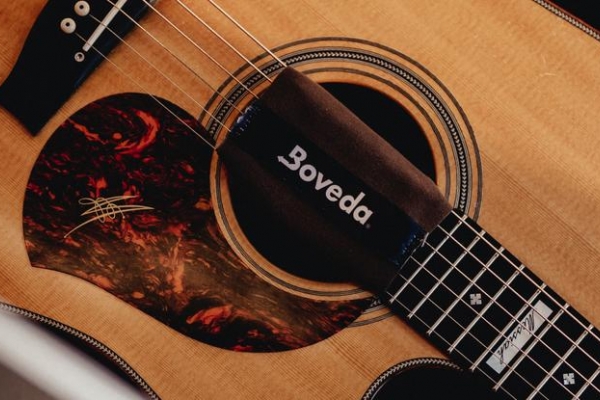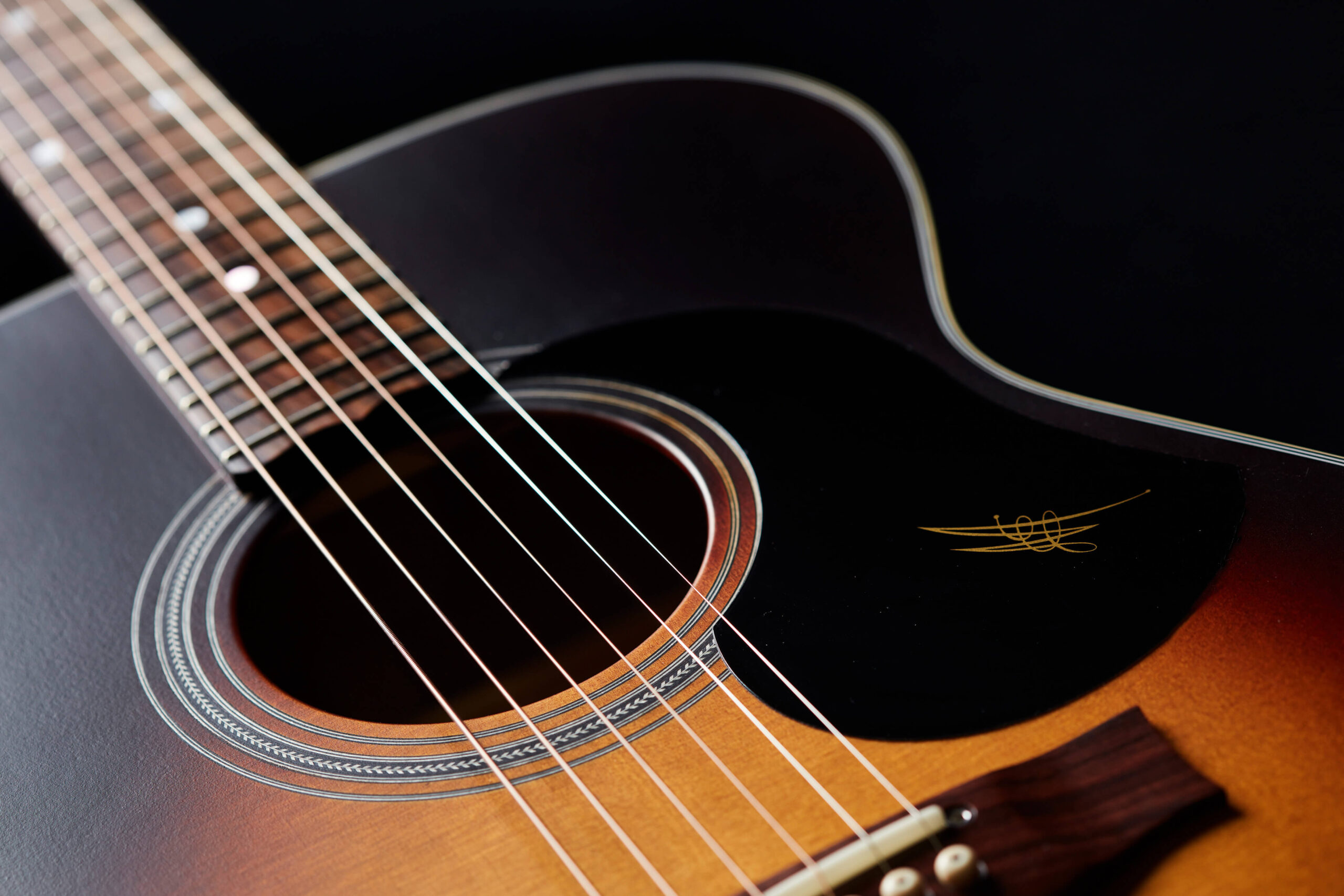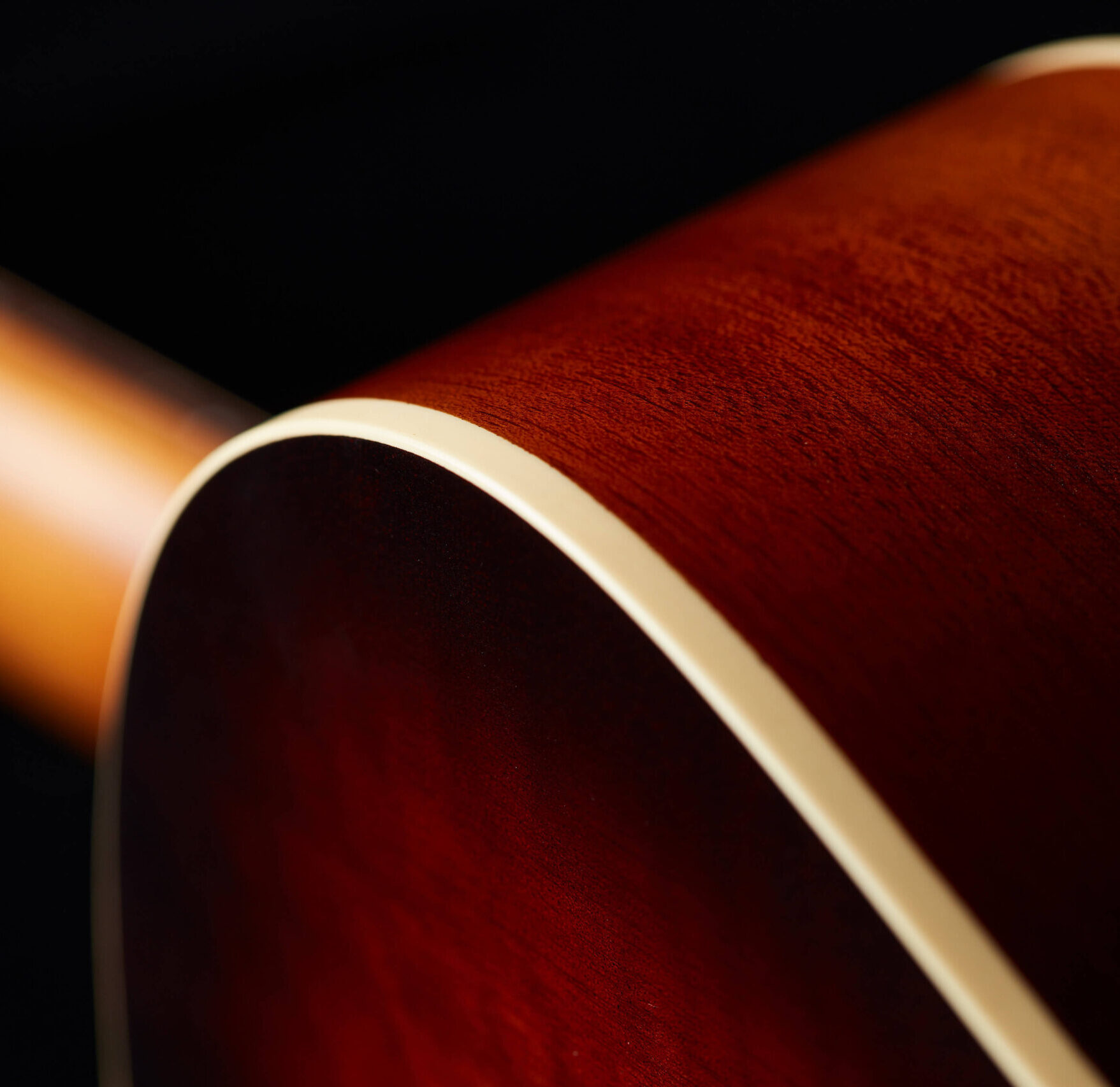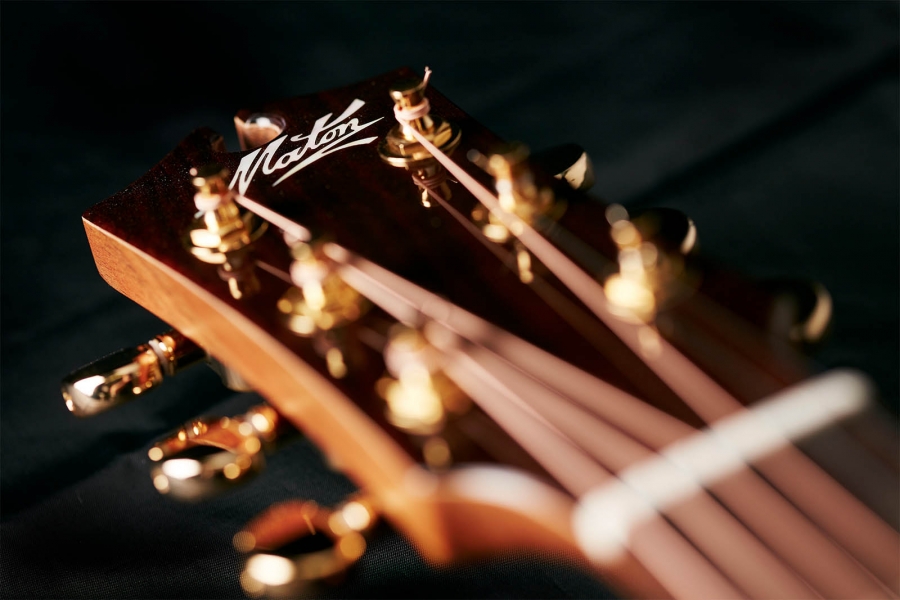Maintaining your Maton Guitar’s condition is essential for both its longevity and sound quality.
Our guide to restringing and general care provides you with expert advice and step-by-step instructions to ensure your beloved instrument remains in optimal playing condition and continues to deliver beautiful music for years to come.
We’ve established this as the level that will best enable our guitars to survive the humidity extremes found in both Australia and around the world.
Unfortunately, it does not mean Maton guitars are indestructible! Quality musical instruments are made from tone woods carefully dimensioned for optimum tonal performance, but they also reflect changes in humidity levels.
Well-seasoned timbers have an equilibrium level of moisture of about 8 percent when relative humidity (RH) is at 50 percent. If the relative humidity climbs to 80 percent and stays there for some time the moisture level in the wood will increase. In a guitar, this will result in a swollen “belly” and a high action.
Conversely, if the guitar is subjected to 20 percent humidity for a long period the result will be a sunken belly, strings rattling on the fingerboard and protruding fret ends.
In either case, the remedy is to expose the guitar to correct humidity levels until normality is restored.
If your guitar is exposed to greater extremes, you should take the following measures to prevent or minimise humidity damage:
It takes a few hours for moisture levels to rise or fall in the timber cells so don’t be afraid to play your gig, just don’t leave your guitar unnecessarily exposed to excessive humidity levels for long periods. We recommend the Boveda Humidity Control System
A guitar is a living, breathing work of art
It was created to have minimum impact on the natural tone of the wood while sealing and protecting it from moisture and wear. Lacquers can be produced with varying degrees of hardness; the harder the finish the greater the surface tension created and the greater the impact on the vibration characteristics of the wood.
Therefore, super hard finishes (such as those used on floor boards) will resist wear but severely dampen the ability of the wood to vibrate. This has been and continues to be an ongoing challenge for all instrument makers. We believe our satin finish provides the optimum balance between tone and toughness. We have been using the same finish since the mid-1990s with great success. It must be noted that the satin finish does develop shiny patches when it comes into repeated contact with other surfaces such as clothing and skin. This is entirely normal and contributes to some of the patina that characterises a well-played instrument. This shiny effect is more noticeable on black satin guitars and dark-stained guitars than on lighter, natural-finished guitars. The shiny patches can be removed by lightly scuffing the area with very fine abrasives but we do not recommend this as the scuffing action is a form of fine sanding which will ultimately wear through the finish. The guitar can also be re-coated with a fresh topcoat but the same patches will develop again as they are a function of playing, which is what the guitars are meant for.
Soak a soft microfibre cloth in warm water and wring out. Wipe guitar using gentle pressure, then wipe dry. Do not allow water to sit on your guitar for any period of time as a “milk” stain may result.
Never use silicon or oil-based products (many popular surface polishes/waxes are silicon-based). Silicon inhibits refinishing and some oils (such as lemon oil) may penetrate the finish, again inhibiting refinish. These products may also be detrimental to the acoustic properties of the instrument should they soak into the timber. Gloss guitars are finished in hand-rubbed polyurethane.
Maton uses the best finish available and each coat is painstakingly rubbed down to ensure maximum shine and durability while maintaining Maton’s ultra-thin specifications.The final coat is hand rubbed and buffed to bring out the full beauty of the timber.
For more information on humidity and guitars check out our Warranty & Care Booklet.
Alternatively please call our service department or ask your local Maton Dealer.





